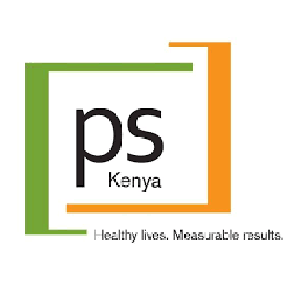Pre Test
Module 1: Covid-19 introduction and background
Part 1: Covid-19 introduction and background
Part 2: Introduction to emerging respiratory viruses
Part 3: What are coronaviruses?
Part 4: Where do coronaviruses come from?
Part 5: Severe acute respiratory syndrome coronavirus 2 (SARS-CoV-2)
Part 6: Transmission of SARS-CoV-2
Part 7: Covid – 19- signs and symptoms
Part 8: SARS-CoV-2- laboratory diagnosis
Part 9: SARS-CoV-2 prevention
Part 10: Management of covid - 19
Part 11: Current global & local covid-19 situation
Part 12: Key messages (1)
Part 13: Key messages (2)
Part 14: Module one review questions
Module 2: Introduction and background to covid-19 vaccines
Part 1: Introduction and background to covid-19 vaccines
Part 2: Rationale for use of covid – 19 vaccine (1)
Part 3: Rationale for use of covid – 19 vaccine (2)
Part 4: How covid-19 vaccines work- video
Part 5: Objectives of covid-19 vaccine deployment
Part 6: Key messages
Part 7: Module two review questions
Module 3: Covid-19 vaccines in Kenya
Part 1: Covid-19 vaccines in Kenya
Part 2: Phases for covid-19 vaccine introduction
Part 3: Eligibility criteria for covid-19 vaccination
Part 4: Vaccination update
Part 5: Covid-19 vaccines in Kenya
Part 6: Vaccine details
Part 7: Vaccination of pregnant women
Part 8: Contraindications- AstraZeneca, Sinopharm and, Johnson & Johnson
Part 9: Contraindications- Pfizer and Moderna
Part 10: Important note!
Part 11: Precautions- AZ, Pfizer, J&J, Moderna and Sinopharm
Part 12: Key messages
Part 13: Module three review questions
Module 4: Covid-19 vaccine safety
Part 1: Covid-19 vaccine safety
Part 2: What is an AEFI?
Part 3: The AEFI surveillance cycle
Part 4: Type of AEFI by cause
Part 5: Examples of vaccine product-related AEFI
Part 6: Vaccine-quality related reaction
Part 7: Immunization error – related reactions
Part 8: Immunization anxiety-related reactions
Part 9: Clusters
Part 10: Classification of AEFIs by seriousness
Part 11: How can you prevent immunization error related AEFI
Part 12: Responding to an AEFI (1)
Part 13: Responding to an AEFI (2)
Part 14: Covid-19 vaccine safety
Part 15: Rare AEFI (1)
Part 16: Rare AEFI (2)
Part 17: Steps of managing anaphylaxis- ABCD
Part 18: Thrombosis with thrombocytopenia syndrome (TTS)
Part 19: Point to note on TTS
Part 20: Key messages
Part 21: Module four review questions
Module 5: Covid -19 information, education and communication
Part 1: Covid -19 information, education and communication
Part 2: Effective communication strategies
Part 3: Techniques for good communication
Part 4: Bottlenecks to effective communication
Part 5: HCW- roles and responsibilities
Part 6: How are concerns about covid-19 expressed?
Part 7: Diffusion of innovation
Part 8: Risk perception and decision making
Part 9: Communicating risk
Part 10: Covid-19 vaccine risk communication
Part 11: How do we build community confidence in the covid-19 vaccine?
Part 12: Understanding and responding to vaccine hesitancy
Part 13: Responding to vaccine hesitancy using motivational interviewing (MI)
Part 14: Motivational interviewing skills for vaccination
Part 15: Respectfully sharing knowledge to build trust
Part 16: Sample messages for health workers (1)
Part 17: Sample messages for health workers
Part 18: Covid-19 vaccination communication algorithm for health workers
Part 19: Tailoring key messages- examples
Part 20: Crisis communication in vaccination
Part 21: Importance of crisis communication
Part 22: Rules of crisis communication
Part 23: Example of crisis communication (1)
Part 24: Example of crisis communication (2)
Part 25: Key messages
Part 26: Module five review questions
Module 6: Common myths and frequently asked questions on covid-19 vaccination
Part 1: Common myths and frequently asked questions on covid-19 vaccination
Part 2: Example of myths and facts about covid-19 vaccines
Part 3: Frequently asked questions (FAQs)
Part 4: Key messages (1)
Part 5: Key messages (2)
Post Test
















